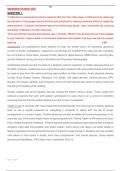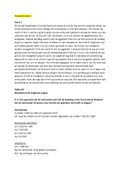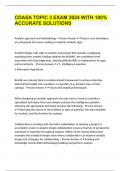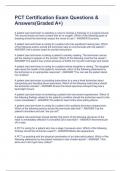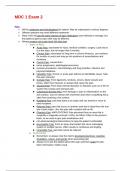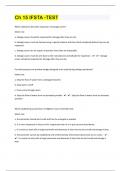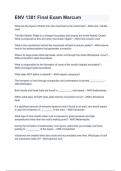Exam (elaborations)
Inc4803 Exam Preparation 2023(Oct_Nov2020_2021)
- Institution
- University Of South Africa (Unisa)
The document contain questions,well researched guidelines on how to answer exam papers from Oct_Nov 2020_2021 This will help prepare for exam 2023
[Show more]
